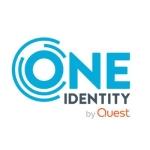What is our primary use case?
There have been only two, maybe three projects related to this product. The challenge with obtaining information about these projects is that we focused mainly on designing the solution.
The customers did not want continuous involvement in the operations because they couldn't see immediate results. So, we started with initial contact and face-to-face interviews to understand the organization's structure. Then, we began integrating the solution, including the site-based aspects and the schema for the metadata directory, which is essential for working with other components.
However, the time spent designing and integrating the identity solution is a challenge. The deployment process is not quick. In the best-case scenario, it may take around six months before you see some tangible results at the beginning of the implementation of the identity solution.
What is most valuable?
The concept is primarily for the people in the business. In business, you can discuss how integrating all the services and resources within the company can bring numerous benefits. It involves having an integrated persona in the organization, not just in technology but throughout the company, including resources, printing, Salesforce, and office.
The problem lies in how to convey these ideas within each department. For example, the technology department might say, "No, this is an accounting problem because it's related to the accounting system." And the same goes for other departments like human resources. These are the kind of challenges we face when trying to integrate all the components within the company. We need to communicate with individuals about the benefits of identity, which are clear to project managers. We have executive support internally, but the challenge lies with the employees who don't see the benefits because they might be long-term or not immediately apparent.
What needs improvement?
I always appreciate products that provide technical information. It would be helpful to understand what's happening behind the scenes, such as log information. It doesn't need to be extensive, but it should show the process and provide insights. For example, in any Identity Manager software, having a console that displays the ongoing process helps identify any issues. Once you stop the process, you can refer to the problem and determine which system it's related to. This is very useful.
In the case of Microsoft Identity Manager, it would be beneficial to have a similar process where each stage of the process is clearly documented. For example, if there's a problem with communication between the identity manager and the human resource services when requesting a new account or adding a profile, having visibility into the systems involved helps identify the root cause. It could be a problem with the sales system, even if the product itself is not the Active Directory server solution. Understanding the connection and how to resolve the issue is crucial.
For how long have I used the solution?
Buyer's Guide
Microsoft Identity Manager
March 2025
Learn what your peers think about Microsoft Identity Manager. Get advice and tips from experienced pros sharing their opinions. Updated: March 2025.
846,617 professionals have used our research since 2012.
How are customer service and support?
It takes a considerable amount of time to reach the right person and truly understand the problem. Especially in different regions, the problem may appear different but actually be related to another underlying issue. Support personnel with experience can identify such cases and provide effective solutions, but it can be time-consuming to reach these individuals, sometimes taking two or three hours on the phone. This can be challenging when the issue is affecting production. Reaching out to the support can be complex. For example, when dealing with Active Directory, there are ways to gather information and create reports, but they may not always be effective in certain scenarios. You often need to gather information from different sources, compile it into a document, and explain the problem, its identification, the solution, and so on. It's an ongoing process with multiple steps.
How was the initial setup?
The setup was difficult. The deployment process is not quick. This is the case not just with identity solutions from Microsoft but also in general. There haven't been many implementations or opportunities for identity solutions in Mexico. The projects haven't been successful as they want to see quick resolution and benefits from the solution. Implementing identity solutions involves understanding the organization, integrating various systems, validating security components, and addressing other challenges. People often feel frustrated because it takes a significant amount of time during the planning phase. There are no significant issues. The main problem with Microsoft Identity Manager is related to identity requests or similar matters.
Moreover, maintenance depends on how the project is initiated because I don't provide extensive support after the implementation. But initially, around five individuals are involved in a company with items, persons, and employees. In the beginning, there were only five products published in the shopping cart, and users can request services or access to systems such as accounting or similar programs. I don't recall the other programs, but there were only five initially. The problem arises when it comes to budget constraints. We publish five products internally and integrate with three systems—human resources, accounting, and IP directory— but there are more systems in existence. We try to create and extend the solution, but the customer needs to assign dedicated personnel to ensure the continuity and smooth operation of the solution. This becomes problematic because they usually reach out to us when they encounter issues like communication problems or misconfigurations. Maintenance or system upgrades are not the primary reasons for their calls.
Which other solutions did I evaluate?
I have experience with Microsoft Identity Manager as well as the Identity Manager from Quest Software, which was previously owned by VMware.
What other advice do I have?
Overall, I would rate the solution an eight out of ten. However, my experience is based on the planning stage because we haven't had the opportunity to implement it.
Disclosure: I am a real user, and this review is based on my own experience and opinions.

















